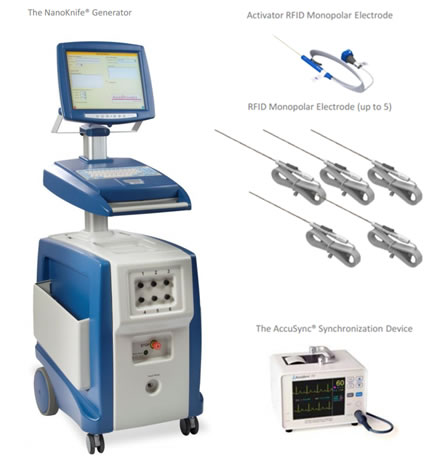
治疗直径约3cm的实体肿瘤时,纳米刀一般只需90个100毫秒的超短脉冲。一组治疗时间不到一分锺。因此即使有三个或四个相互重叠的消融区,全程的消融时间也不会超过5分锺。
通过众多临床研究表明,纳米刀是一种安全而又高效的肿瘤治疗技术,与其他肿瘤治疗技术相比,它具有以下优势:
- 消融时间短

2. 治疗区域的血管、神经等重要组织得以保留
纳米刀消融技术的另一个特点是它能够保护消融区内重要的组织结构。所有经过纳米刀治疗的肝组织中,其重要结构,如肝动脉,肝静脉,门脉,肝内胆管均能得到良好的保护。纳米刀是非热能消融,不是以升温或降温的方式使蛋白质发生变性,各类蛋白质和DNA不会受到破坏,而可以得到修复。
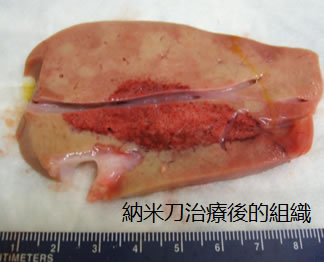
3. 不受热岛效应影响
纳米刀的消融主要是通过电脉冲击穿细胞膜,在此过程中不会产生热量,也不会受到其他外界温度影响。
4. 治疗彻底,治疗边界清晰
纳米刀的另一个优势是,无论肿瘤是靠近血管的,还是形状不规则或者是大肿瘤,IRE都能对其进行消融。此外,纳米刀消融区边界清晰,划界厚度仅为1-2细胞单元。去治疗区和非治疗区域泾渭分明,因此,对纳米刀的有效性、治疗结果以及后续跟踪都能进行更淮确的判断和评估。
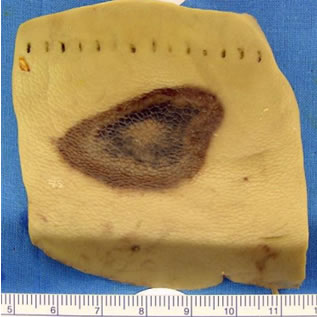
5. 治疗区域可恢複正常功能
纳米刀诱导肿瘤细胞出现凋亡。凋亡的优点之一就是它能够利用免疫来促进细胞死亡,人体将把细胞凋亡识别为正常的细胞死亡过程,然后通过细胞吞噬作用将凋亡组织清除掉,促进正常组织的再生与修複。
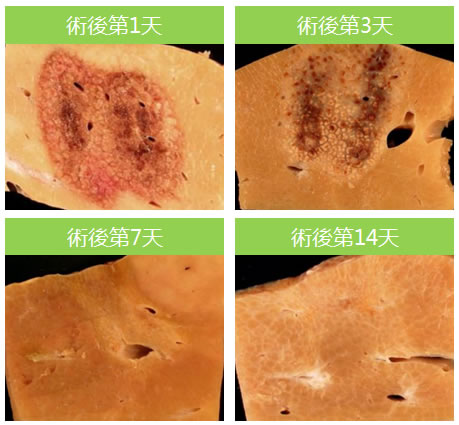
6. 效果过程可实时监控
纳米刀治疗能够通过超声、CT和MR进行影像导航和监控。在影像设备的辅助下,可以对纳米刀探针的定位、标靶区域的消融过程以及最终消融区的大小进行实时监控,而且影像中消融区边界的精确度可与组织学上的精确度相媲美。用超声或CT监控到的消融区与病理分析中测量真实的消融区的尺寸偏差仅有几毫米。由此可见,纳米刀消融的影像监控的精确度非常高。影像中还能清楚显示未消融的残馀癌症细胞,于此医生能够对其再次进行消融。另外,实时监控还可以让医生观察到消融区周围组织的变化,从而推断出并发症出现的可能性,保障病人的安全以及有助于其术后快速恢複。
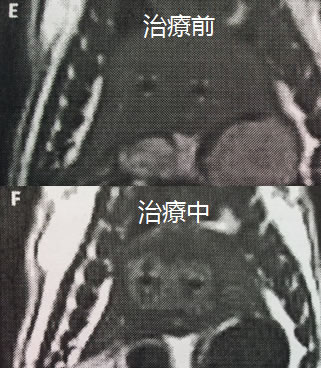
7. 纳米刀可适应更多複杂的病情
对于靠近大血管、胆管、胰管、肝门静脉等危险区域的肿瘤,可以进行消融治疗,以及对于前列腺肿瘤或者脊椎附近肿瘤,不会因为神经受损而发生瘫痪、性功能丧失等情况。所以相对来说,纳米刀治疗肿瘤是安全而有效的。
附:来源: Irreversible Electroporation (IRE) | University of Maryland Medical Center
Needle-like Probes Destroy Diseased Cells But Spare Healthy Tissue
IRE uses electrical energy to target tumors at the cellular level. Using short electrical pulses, IRE breaks open the tumor cell walls, causing these cancer cells to die1。
The key difference with IRE compared to other treatments is that this electrical field does not produce extreme heat or cold. It may selectively damage the cancerous cells, sparing healthy tissue and structures that may be nearby, allowing us to provide more targeted treatment1,Doctors create a precise electrical field by first mapping the tumor using state-of-the-art computed tomography (CT) technology. The interventional radiologists have a CT scanner in the treatment room, so they are able to make up-to-the minute calculations on the size and location of the tumor.
Once we determine the treatment area, we insert the electrode probes through the skin into the tumor, creating a field around the lesion. We then send short, intense electrical pulses - each less than 100 microseconds - between the probes, killing the tumor cells. Then the body's normal healing response takes over, naturally producing new cells and absorbing the cells that have been targeted2.
IRE is performed under general anesthesia. The time it takes to place the needles varies based on the size and location of the tumor. Because the procedure is considered to be minimally invasive, recovery time may be faster when compared to some other treatments, with some soreness from the needles themselves. There is little scarring because of the way IRE causes the cancer cells to open and die, taking advantage of the body's natural healing ability.
This procedure is another example of the commitment of University of Maryland faculty to bring cutting-edge technology to their patients, offering them another treatment option when traditional surgery may not be effective for their particular condition3.
IRE may be a viable alternative for patients with tumors in areas we call ”˜high-rent' zones, difficult-to-treat locations that may be near or touching a blood vessel, nerve or duct4。
1.Ziv Haskal, M.D., professor of diagnostic radiology and surgery at the University of Maryland School of Medicine
2.Fred Moeslein, M.D., Ph.D., assistant professor of diagnostic radiology and nuclear medicine at the University of Maryland School of Medicine, and interventional radiologist at the University of Maryland Medical Center.
3.E. Albert Reece, M.D., Ph.D., M.B.A., vice president for medical affairs at the University of Maryland and dean of the University of Maryland School of Medicine.
4.Rahul Patel, M.D., assistant professor of diagnostic radiology and nuclear medicine at the University of Maryland School of Medicine, and interventional radiologist at the University of Maryland Medical Center.








